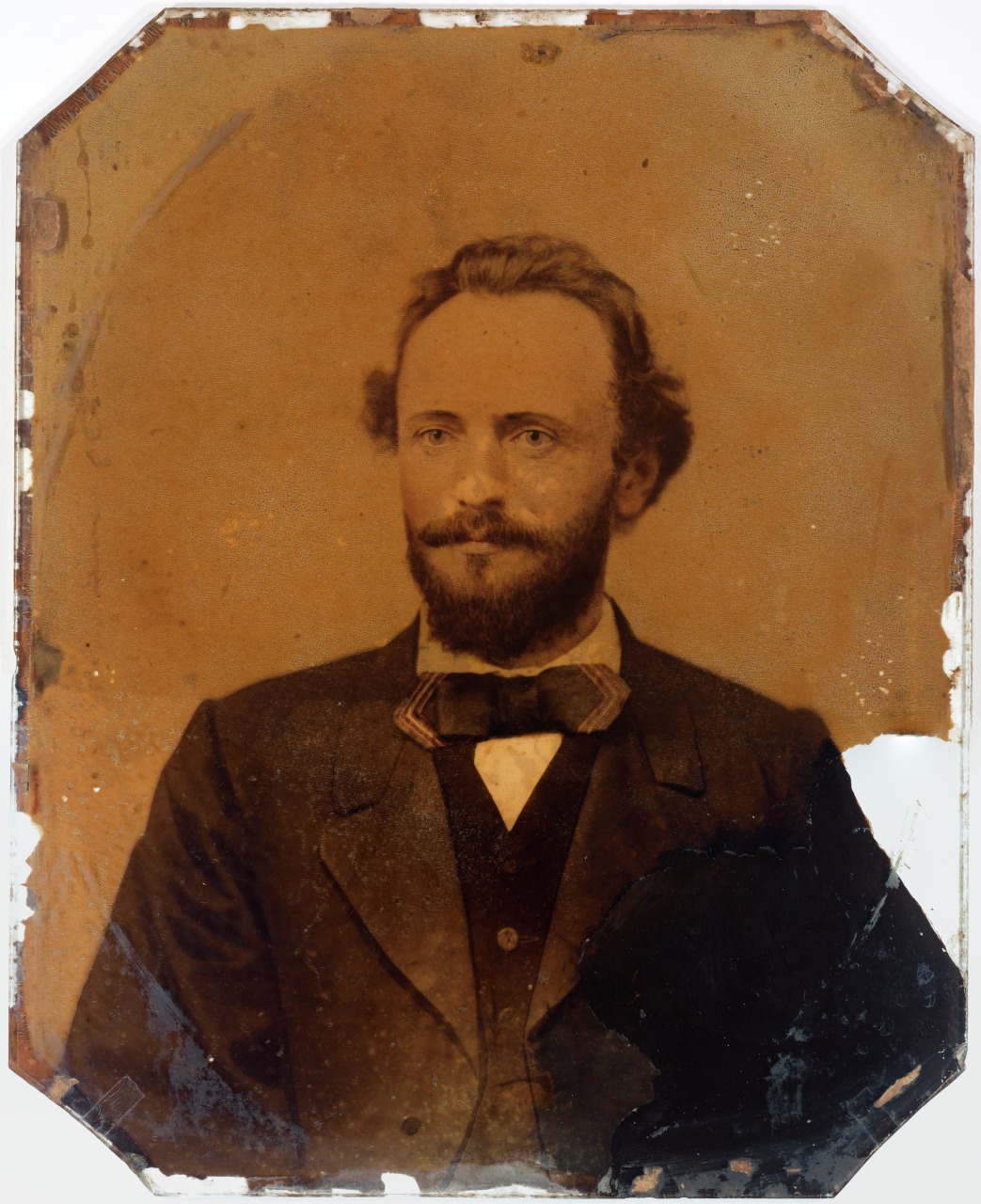American ivorytypes combine photography and painting to create a more affordable alternative to the ivory miniature. These unique, lifelike portraits were made in various sizes, the most common size being 6.5 by 8.5 inches (whole plate), ranging up to sixteen by twenty inches.
Frederick A. Wenderoth of Philadelphia is most closely associated with the discovery and introduction of the American ivorytype in the mid-nineteenth century, although numerous photographers practiced the technique.
The traditional method of producing an American ivorytype is to create two salted paper prints from the same glass plate negative. Each print is hand painted, using various hues of watercolors around the face and other detailed areas within the image. The paint can be either heavily or lightly applied, depending on the desired final effect. Once the prints are dry, a mixture of warm beeswax and gum dammar is poured onto a thick piece of glass. Typically, the salt print with the finest painted detail is then face mounted to the wax-coated glass. A bone tool or another type of straight edge is used to smooth out air bubbles, sealing the print to the glass. Once the print is sealed with wax and dry, the colors become less prominent, resulting in a more translucent appearance. Next, the second colored print is mounted to a backboard and aligned in registration with the image on glass. The whole package is then taped together and can be framed or set in a case.
Perhaps because the American ivorytype is a composite of various photographic processes and techniques, its practice was never extremely popular, and examples are considered rare.

Frederick C. Del Bondio
American ivorytype in two parts; ca. 1869
by an unknown photographer
The Historic New Orleans Collection, gift of Mrs. Frederick Charles Del Bondio, 1991.106.1
